Rim width and tire width are two closely related sizes. Flexible tire sidewalls alow a single tire size to be mounted on a rim of various widths.
Actually, there is an approved rim width range for every tire size, but on the other side, there is a tire width range for every rim size, specifically, rim width.
Note: There are three charts on this page. First chart shows tire widths adequate for a certain rim width and tire aspect ratios. The other two charts are doing the same but in a separate table for each rim width; inside the table data is ordered by tire width or tire aspect ratio.
When replacing a rim or a tire with a wider one you could ask a question in two different ways:
The answer would be: "Rim widths corresponding to the tire size 195/65 R15 are: 5.5, 6.0, 6.5 and 7.0 inches". The information related to other tire sizes can be found in Wheel/Rim Size Calculator or Rim Width Range and Measuring rim for Tire Size chart.
If you want to mount a wider or a narrower tire on the existing rim you could ask the question:
For example, appropriate tire widths for the 6" rim are from 175mm to 225mm. That's answer you can find in the charts below this text.
When replacing OE(original equipment) tire with a wider one, aftermarket tire, the width of rim should be taken into consideration because each rim width corresponds to only a few tire widths.
The charts presented below could help you to make the rational decision about the tire width you need for the given wheel/rim width.
But, please consider that the resulting tire list lacks certain tire sizes, so it should not be treated as complete. When we say tire size in this context(relation between tire width and rim width), we mean only on tire width(i.e., section width) and tire aspect ratio/series, there is no rim diameter. Tires presented in the list should not be all considered suitable for your car, because only a few of them or maybe, only one would satisfy a requirement that their overall diameter should be almost the same as your OE (original equipment) tire diameter. The data presented in the charts is only for the passenger car metric tires.
The data presented in the charts is only for the passenger car metric tires.
NOTICE: These charts do not represent complete or ultimate solution for this particular purpose, they are only a reference.
So, when you find tire sizes, i.e., tire width and series combinations that fit your wheels/rims, use our Tire Size Calculator – Tire Dimensions to compare them with your OE Tire size to ensure that the selected tires circumferences or diameters do not deviate too much from the OE tire circumference or diameter. This is extremely important for many reasons.
The charts, as an addition to our tire4rim calculator, should be used along with our rim4tire calculator, which complement each other. If you choose a tire size in these charts or in the Tire size for rim size calculator, do one more check in the Wheel/Rim size calculator(or in the chart: Rim width range and Measuring rim width for Tire Size) for the selected tire size, to double check if the selected tire size has your rim in
the acceptable rim width range.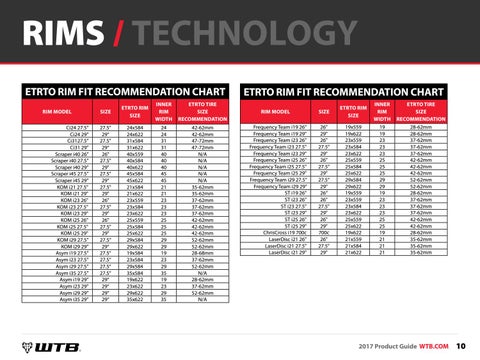
Find more relevant information below these charts.
Can I mount a smaller tire width than the one presented in the chart as the smallest, for the specific rim width?
Notes: A Tire with higher profile(series) for the same tire width or the same profile for a wider tire width, has a higher tire sidewall, that means more comfortable ride. Wider tires create more traction on the road, resulting in reducing fuel economy.
Disclaimer:
Please note that these charts should be used only as a reference and they should be verified with tire/wheel manufacturers. They are for informative purposes only. The tyresizecalculator.com is not responsible for any errors that may arise with their usage.
In the charts, every tire width and aspect ratio combination, listed below the certain rim width, could be mounted on the rim width, but the question is: which tire width is the best fit to the rim width?
The tire Measuring Rim Width, which stems from the tire size could help. You already have the tire width, the aspect ratio, the rim diameter you want to use, that is, you have the full tire size. if your rim width is closer to the measuring rim of selected tire, it's more likely that the chosen tire would fit your rim.
You already have the tire width, the aspect ratio, the rim diameter you want to use, that is, you have the full tire size. if your rim width is closer to the measuring rim of selected tire, it's more likely that the chosen tire would fit your rim.
Every tire size has its own Measuring Rim (check the Measuring Rim Width for a tire size by clicking the previous link). In other words, the nominal tire size(imprinted on a tire sidewall) becomes the real tire size when fitted on the appropriate Measuring Rim.
For the specific rim size and adequate tire dimensions try out our Tire size for rim size/width calculator which tells you what tire sizes to pick for entered rim size(i.e., rim width).
The charts in this article show what tire width and series combinations fit to the specific wheel/rim width i.e., they show the tire width range for the given rim width.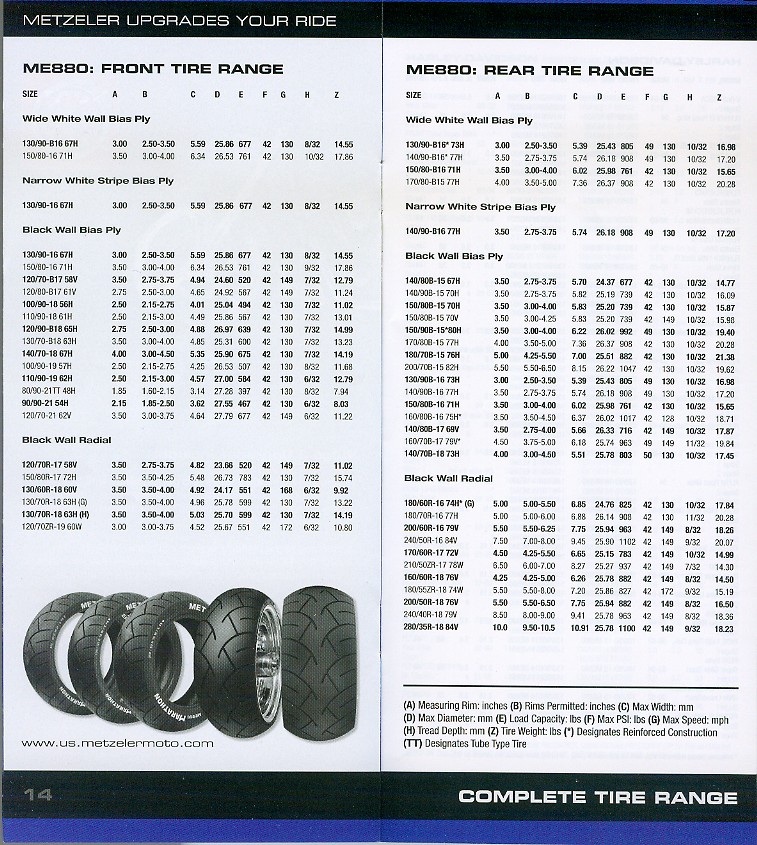 E.g., for the 7" (inch) rim width, following tire widths can be fitted: from 195mm to 255mm.
E.g., for the 7" (inch) rim width, following tire widths can be fitted: from 195mm to 255mm.
In the charts, beside each tire width, there is one more tire dimension: a tire series. The tire series is the ratio between the tire section height(i.e., tire sidewall height) and the tire section width (i.e., tire width). Series = tire sidewall height / tire width.
If two tires have the same tire width, but different series: the first has 50, the second has 30, that means that the second tire has the smaller tire sidewall height(lower profile) in relation to the first, so rims will be closer to the road.
The tire width, the rim width and the tire series are closely related sizes when we talk about the tire to rim fitment. The reason for this is that for almost every tire series there is a different rim width/tire width ratio(specified by the tire associations). The ratio is used for determining the Measuring Rim for the tire. In other words, a lower aspect ratio means that you could use a wider rim for the same nominal tire width.
Actual tire dimensions depend on a rim on which a tire is mounted. The nominal tire size is imprinted on the tire sidewall, but the tire gets its real dimensions(i.e., real tire size) only when mounted on the rim. That's the reason why a Measuring Rim exists for every tire size.
Next important info is that the tire width changes for about 5mm (2/10") for every 0.5" (inches) change in the rim width, in the Approved Rim Width Range for the tire.
Suppose you have the tire size 195/65 R15 on the 6" (inch) rim width (6"x15"). If you changed the rim to 7"x15", according to the previous rule, when you mount the tire 195/65 R15 on that rim, the real tire width would be 195mm + (2 x 5mm) = 205 mm.
The type of rim, that tire is designed for, is also important.
All these things could affect the overall tire diameter(or circumference), which is important to stay in the permissible limit, during the process of tire replacement.
These charts are only for the passenger car metric tires.
The charts are a compilation of data from year books of renowned tire manufacturers, and it might not be in accordance with the newest data, so please, always check the data from these charts with tire manufacturers or tire specialists!
Looking at one chart row, for one rim width, treated as a measuring rim width(MRW), there are various tire widths in columns, designated as aspect ratio(i.e., tire series/profile). In the row, as series rises, the tire width rises also. So, we may say there are the minimum and the maximum tire width for one rim width, but only in the context of the tire series.
If we took only one cell in the row, which contains one tire width, for e.g., the one with the minimum tire width(TW) for observed rim width(RW), could we say that this is the minimum tire width that can be mounted on the rim width? No. The cell contains the real tire width for the rim width, the one which is equal to the nominal tire width/size(imprinted on the tire sidewall), the one we get when the tire with that nominal tire width is mounted on the rim with the rim width.
This doesn't mean we can't mount a smaller tire width than the one showed in the chart as the smallest for the same rim width. How so? For e.g., the row with 9" rim width lists as the smallest tire width, 255mm for AR: 25,30,35 and 40. Is it possible to mount smaller tire width than 255 on that rim? Yes.
In our Wheel/Rim Size Calculator-Shows acceptable rim width range for the tyre size, enter tire size 245/40 R 18, you'll get approved rim width range(ARWR): 8" – 9.5" and measuring rim width of 8.5", which means you can mount that tire size(with 245mm tire width) on 9" wide rim, because it's in the ARWR for that tire size. But, measuring rim width(MRW) for that tire size is 8.5", and we were talking about mounting the tire on the rim width of 9".
A tire gets its final size after being mounted on a rim. Every rim width increase of 0.5" as a result has tire width increase of 5mm or 2/10", when the tire is mounted.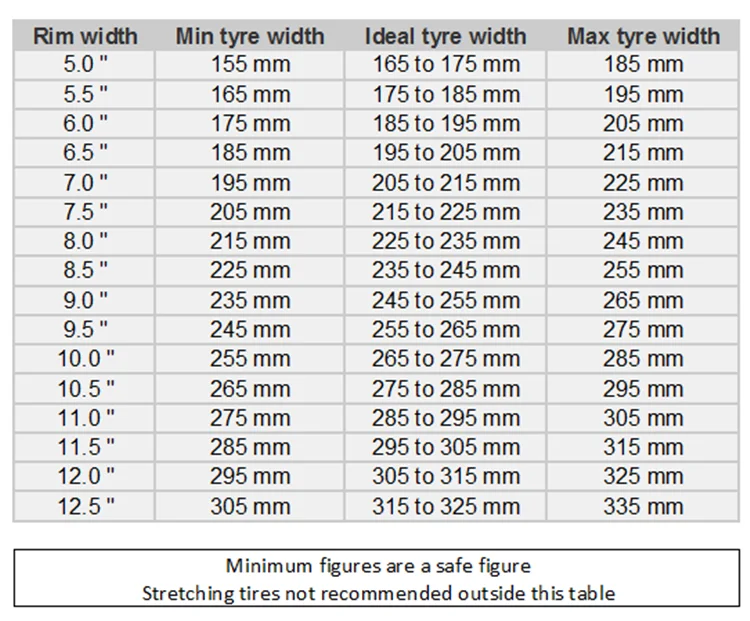 Every tire size has a measuring rim width and an approved rim width range.
Every tire size has a measuring rim width and an approved rim width range.
Hence, when we mount the nominal tire size(imprinted on the tire sidewall) 245/40 R 18, which has MRW equal to 8.5", on the rim width of 9", the real tire size, specifically, real tire width would be 250mm, not 245mm, because the rim on which the tire is mounted is 0.5" greater than the tire MRW.
Related articles:
This calculator gives you the answer to the question "What rims fit my car?"
Wheel/Rim Size Calculator shows the acceptable wheel/rim width range for any given tyre size in accordance with the ETRTO standards and databooks of the leading tyre manufacturers.
Each tyre manufacturer has a specific rim width range on which the specific tyre size can be mounted. This calculator should help you to find the appropriate rim width for your tyres. Failure to follow rim width recommendations may result in poor tyre performance or possible wheel and/or tyre failure.
Failure to follow rim width recommendations may result in poor tyre performance or possible wheel and/or tyre failure.
Choosing a wheel near the middle of the acceptable wheel width range will give the balance between ride quality and handling. A wider wheel will improve car handling at the expense of ride quality, while a narrower wheel will improve ride quality at the expense of handling. Consider these compromises when selecting wheels.
Into the form below, select the tyre size and click on the button "Find Rim Size". The table containing the recommended wheel/rim sizes and rim widths, for the selected tyre size, will be presented below the calculator.
Wheel/Rim Size Calculator
select tyre sizee.g., 195/65R15
125135145155165175185195205215225235245255265275285295305315325335345355/253035404550556065707580R 1012131415161718192021222324252628
WAIT...
Disclaimer:
This calculator and its results should be used only as a reference. The results should be verified with tyre/wheel manufacturers or specialists. The tyresizecalculator.com is not responsible for any errors that may arise with its usage.
The results should be verified with tyre/wheel manufacturers or specialists. The tyresizecalculator.com is not responsible for any errors that may arise with its usage.
This calculator is only for the passenger car metric tyres and it's complemented by the Rim Width Range and Measuring rim width for Tire Size chart.
A tyre gets its real size(i.e., dimensions) only when fitted to a rim. The nominal tyre size is imprinted on the tyre sidewall, but the tyre gets its real dimensions (i.e., real tyre size), adequate to the nominal size, only when mounted on the Measuring rim. That's why the measuring rim exists for (almost) every tyre size.
The tyre width changes for about 5mm (2/10") for every 0.5" (inches) change in the rim width, in the recommended rim width range.
This calculator shows the recommended (i.e., acceptable) rim width range for the selected tyre size. Every rim width from the acceptable range should be suitable for the tyre size you enter in the calculator.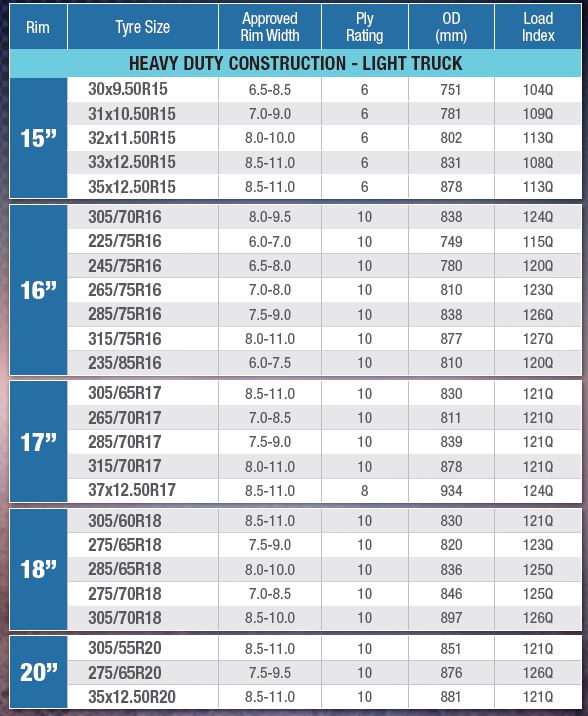
The relation(i.e., ratio) between rim and tyre width is determined by respectable tyre associations. It's dependent on a tyre series(i.e., profile or aspect ratio) and it's used for determining the measuring rim for the tyre. Read more in Tire width for a wheel/rim size chart.
When you find the tyre and rim combination that suits your requirements best, compare the selected tire size with your OE Tyre size to ensure that the selected tyre diameter do not deviate too much from the OE Tyre diameter. This is important for many reasons.
This calculator complements our Tyre Size for Rim Size/Width Calculator and Tyre width for a rim width chart.
Try the Wheel Offset/Backspace Calculator which calculates the offset and the backspace, the important measurements for positioning the wheel/tyre assembly inside the wheel well. This calculator also gives the option to compare wheels, to compare the offset and the backspace of one or more additional wheels to the original wheel.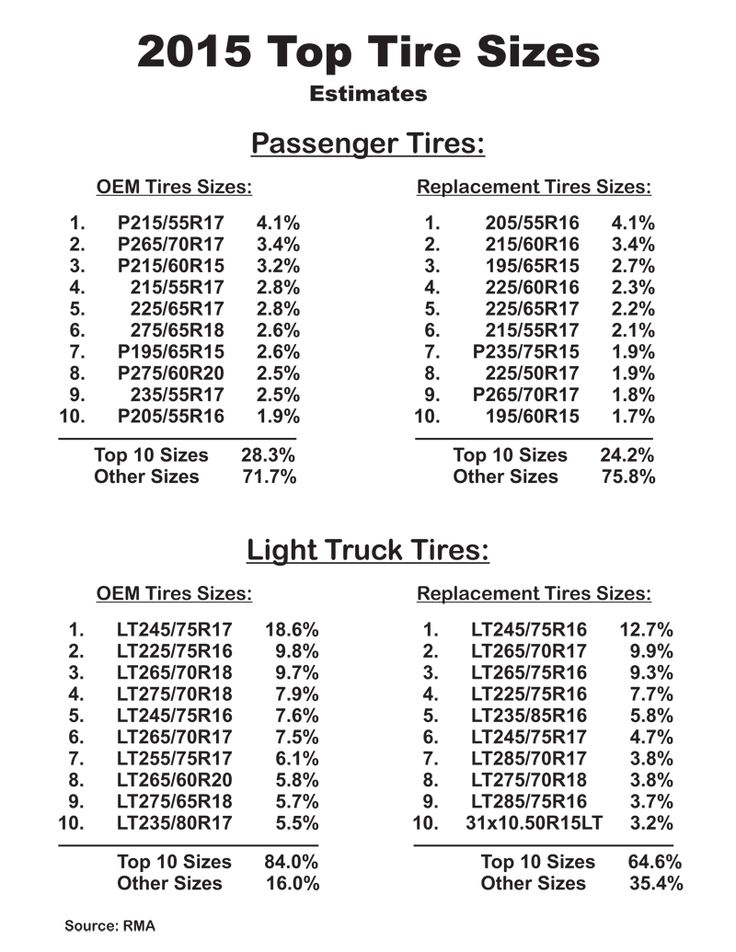
Related articles:
Replacing car rims is not an annual procedure. The condition of domestic roads, the consequences of an accident, many years of mileage - no matter what negative factors affect your wheels, the overall final result: replacement. When selecting new disks, it is necessary not only to determine the type of product, but also to take into account all the significant parameters of the disk. And here the questions arise before the car owner: how to find out the width of the rim of the disk, how to find out the diameter of the hub on the disk and other important characteristics. nine0003
Your vehicle may only be fitted with rims that match exactly the model of your vehicle. If you spend a significant amount of money on products with inadequate performance, you run the risk of experiencing the following problems:
disks simply do not fit in size, they will be impossible to install;
installation is possible, but soon there will be a negative impact on the technical condition of the car and / or road safety.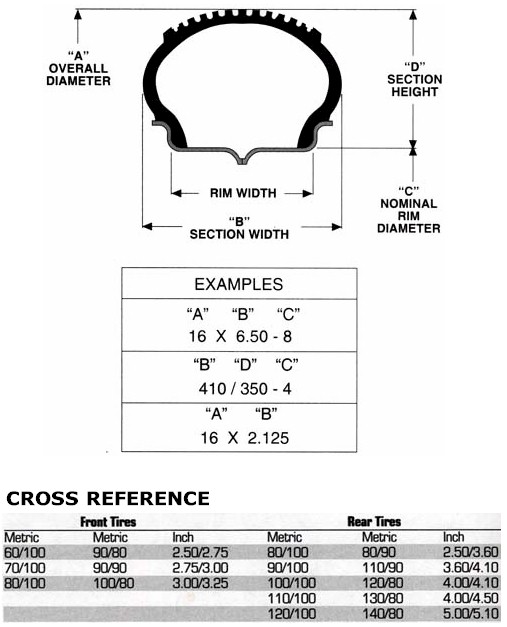 nine0003
nine0003
Don't waste your money and, more importantly, don't risk your own safety. When buying new discs, immediately select the product that is most suitable for your car in all basic parameters. This approach will ensure trouble-free movement, as well as long-term trouble-free operation of the suspension and chassis as a whole.
What characteristics should be of interest to the car owner in the first place? The main significant parameters of rims:
Disc diameter - the mounting fit diameter of the annular / outer part of the rim. Designated in inches.
Disc width, wheel rim width. Specifies the width of the tire to be installed. The indicator is indicated in inches.
DIA is the diameter of the hole for the wheel hub. The value is in mm.
ET - disc offset in mm. Determines the depth of wheel recession in the car arch. nine0003
Number of mounting holes.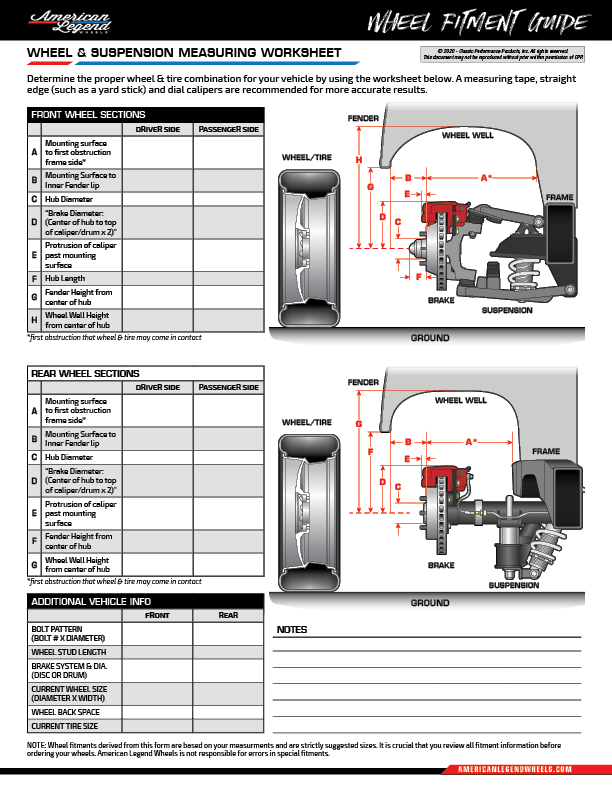 It must exactly match the nominal value for reliable fixation of the car wheel on the hub.
It must exactly match the nominal value for reliable fixation of the car wheel on the hub.
PCD - diameter of mounting holes. With respect to this quantity, high measurement accuracy is required! Deviations are not allowed.
Some values are traditionally measured in inches, others in millimeters. How not to get confused, how to find out the width of the disk in inches or the diameter of the hole on the disk, if you do not do this work daily? Finding, determining or accurately measuring the necessary indicators is a difficult task for a person who is far from the car service industry. nine0003
Is it really that complicated? Let's take a closer look and answer questions from motorists.
It is usually not necessary to measure all the parameters yourself. But how can you find out the width of the rim of an alloy wheel or the diameter of a car wheel without taking measurements? Auto manufacturers indicate the required parameters on the original branded discs.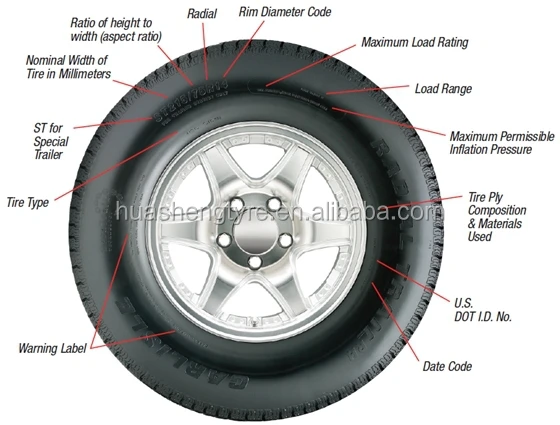 The marking is standard, the same for steel and alloy wheels. nine0003
The marking is standard, the same for steel and alloy wheels. nine0003
Remove the spare tire from the trunk or remove the wheel from the car. Read the inscriptions, most often on the inside of the disc. As a rule, 3 main parameters are indicated there: diameter, width and reach. For example: 5.5J x 13, where the first value 5.5J is the width of the disc in inches, and the second is the diameter, also in inches. The inscription ET35: the departure value in millimeters is 35. Instead of ET, the designation OFFSET or DEPORT is found - it depends on the country of origin.
It can also be marked, for example, d54.1, which means DIA - the size of the hole for the hub is 54.1 mm. This inscription answers the question how to find out the inner diameter of the disc and even how to find out the size of the hub on the disc - look for such a marking, this is important.
If numbers are present, say 5x120, then you know the number of seat bolts (5) and PCD is the diameter of their location (120 mm).
It is even easier for the owner of the car if he has the owner's manual for the vehicle. The algorithm of actions is very simple: open, study, select new disks in accordance with the manufacturer's recommendations. It is almost impossible to make a mistake in this case.
However, not all motorists are so fortunate. Let's say there are no instructions, the car is old, and non-native disks were installed by the previous owner - then there is no information in principle. It's OK. There is always a back-up plan for this. Namely, independent actions. nine0003
Taking measurements yourself is not as difficult as it seems.
The easiest way to count the number of mounting holes is from 3 to 6.
Using a tape measure, ruler or caliper on a disassembled wheel, you can measure the parameters of the diameter of the central hole, the width of the disc.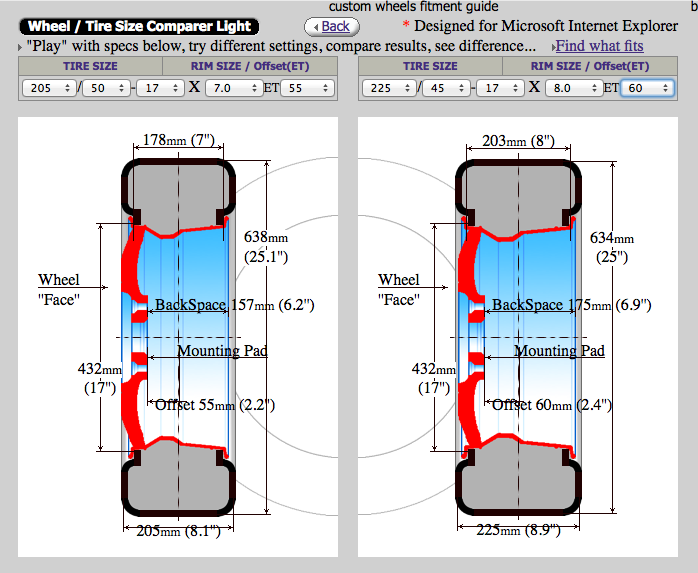
PCD parameter: how to find out the diameter of the holes on the discs? First, measurements are taken with a caliper, then calculations are made using special formulas. nine0003
In the table you can see which PCD values apply to different brands of passenger cars.
PCD value in mm | Car brand |
| 98 | Citroen, Fiat, Alfa-Romeo, LADA, Lancia, Peugeot, Skoda, Seat |
| 100 | Audi, Cooper, BMW, Chrysler, Citroen, Chevrolet, Daewoo, Daihatsu, Fiat, Hyundai, Honda, Jeep, Kia, Mitsubishi, Nissan, Mazda, Opel, Proton, Renault, Rover, Subaru, Peugeot, Skoda, Seat, Suzuki, Volkswagen, Toyota |
| 108 | Audi, Ford, Citroen, Mazda, Land Rover, Peugeot, Jaguar, Renault, Volvo, Saab |
| 110 | Opel, Fiat, Alfa-Romeo, Saab |
| 112 | Audi, Ford, Chrysler, Mercedes-Benz, MCC-Smart, Skoda, Volkswagen, Seat |
| 114. | Chevrolet, Citroen, Chrysler, Daewoo, Daihatsu, Dodge, Jeep, Fiat, Ford, Hyundai, Honda, Lexus, Kia, MCC-Smart, Land Rover, Mitsubishi, Mazda, Nissan, Peugeot, Rover, Renault, Subaru, Suzuki, Volvo , Toyota |
| 115 | Chrysler, Chevrolet, Opel |
| 118 | Citroen, Nissan, Fiat, Peugeot, Renault, Opel |
| 120 | BMW, Volkswagen, Hyundai |
| 120.7 | Jaguar |
Certain deviations are allowed for individual parameters without adversely affecting vehicle handling and
suspension condition.
Disc diameter. Alloy wheels are allowed 1 inch oversize.
nine0018Disc width. Tolerance is 0.5 inches.
DIA - The size of the center hole should ideally match the diameter of the hub.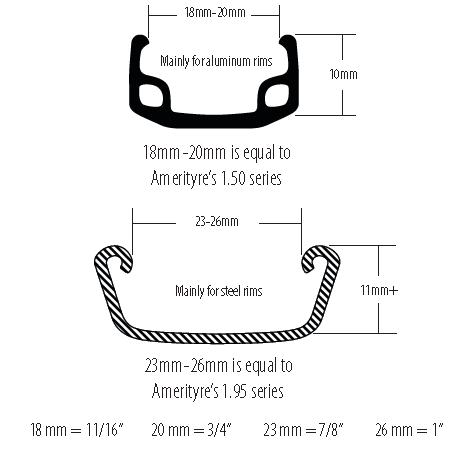 Permissible deviation up to +0.3 mm.
Permissible deviation up to +0.3 mm.
ET - it is desirable to comply with standard sizes. It is permissible to change the overhang up to +/- 2 mm.
Pay attention! Parameter PCD is determined with absolute precision. The number of mounting holes must exactly match the declared values. Errors are not allowed. nine0086
A serious approach to buying new discs ensures the safety of travel and eliminates the issue of unnecessary financial costs for suspension repairs. Let's summarize.
When choosing new rims, consider 6 basic parameters. As well as manufacturer's recommendations for your car model.
Read the instruction manual in detail - this is the easiest way to find the necessary characteristics.
nine0018There are no instructions, but the car is equipped with branded discs - look at the markings on the inside of the disc.
Determine the missing values yourself. Be attentive to those indicators, the measurements of which do not allow errors.
Be attentive to those indicators, the measurements of which do not allow errors.
Choose the right wheels for your car.
The issue of selecting tires for wheels has always been relevant for motorists, since every self-respecting driver needs to know certain parameters. If the characteristics are not known and these parameters are not followed, the car will experience a significant deterioration in performance, which seriously threatens safety.
In order to match rubber to the wheels as accurately as possible, you should first study the wheel markings:
Wheel marking with dimensional indicators R13 4x98 ET35 J5 D58.6
It is the latter that plays a major role in matching tires and wheels. In order to choose the right wheels for tires on passenger cars, you can use the table compiled by the specialists of Avtotire Kom.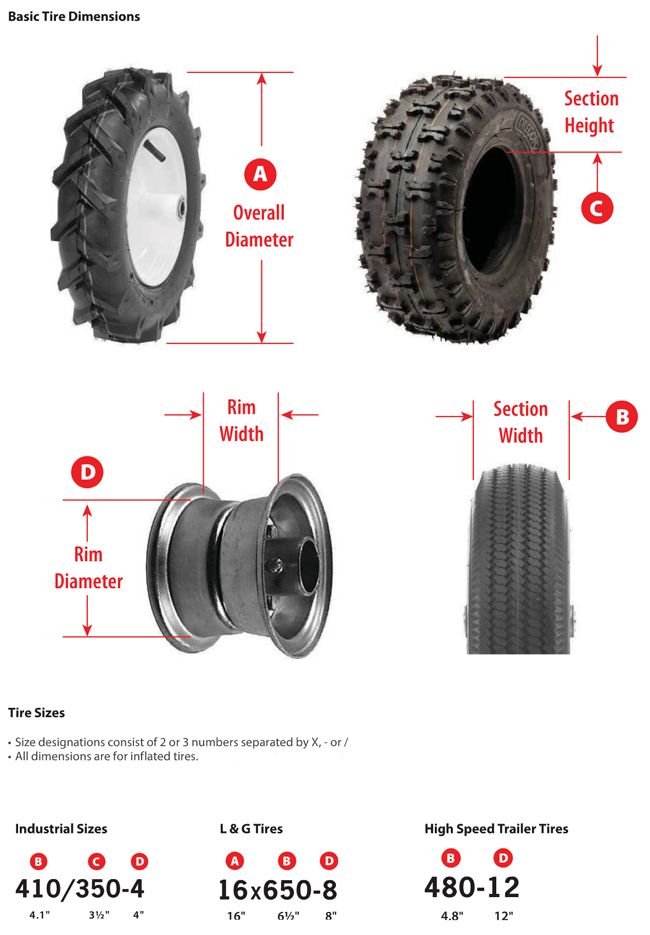 Or you can use the selection of wheels for the car by clicking on the link .
Or you can use the selection of wheels for the car by clicking on the link .
Tire/rim matching chart
| Wheel diameter | Tire size | Wheel rim width (inches) | ||
| Minimum | Recommended | Maximum | ||
| 13" | 135/80R13 | 3.5 | 3.5 | 4.5 |
| 145/80R13 | 3.5 | 4 | 5 | |
| 155/80R13 | 3 | 4.5 | 5 | |
| 165/80R13 | 4 | 4.5 | 5.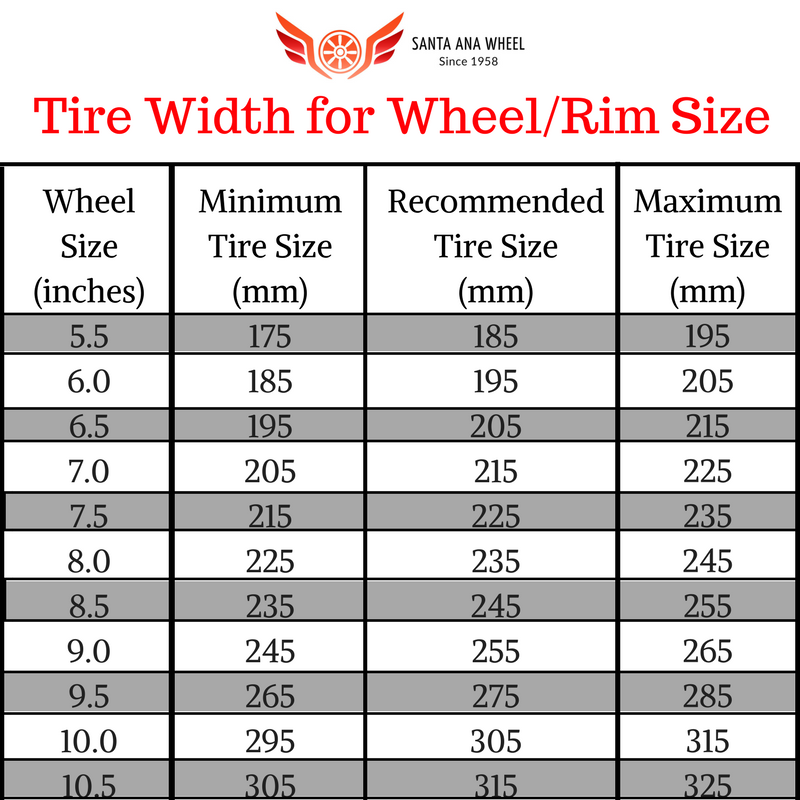 5 5 | |
| 165R13 | 4.5 | 5 | 6 | |
| 14" | 175/80R14 | 4.5 | 5 | 6 |
| 185/80R14 | 4.5 | 5 | 6 | |
| 13" | 135/70R13 | 3.5 | 4 | 4.5 |
| 145/70R13 | 3.5 | 4.5 | 5 | nine0142|
| 155/70R13 | 4 | 4.5 | 5 | |
| 165/70R13 | 4 | 5 | 5.5 | |
| 175/70R13 | 4. 5 5 | 5 | 6 | |
| 185/70R13 | 4.5 | 5.5 | nine0130 6||
| 14" | 165/70R14 | 4 | 5 | 5.5 |
| 175/70R14 | 4.5 | 5 | 6 | |
| 185/70R14 | 4.5 | 5.5 | 6 | |
| 195/70R14 | 5 | 6 | 6.5 | |
| 13" | 155/65R13 | 4.5 | 4.5 | 5.5 |
| 165/65R13 | 4.5 | 5 | 6 | |
| 175/65R13 | 5 | 5 | nine0130 6||
| 14" | 155/65R14 | 4.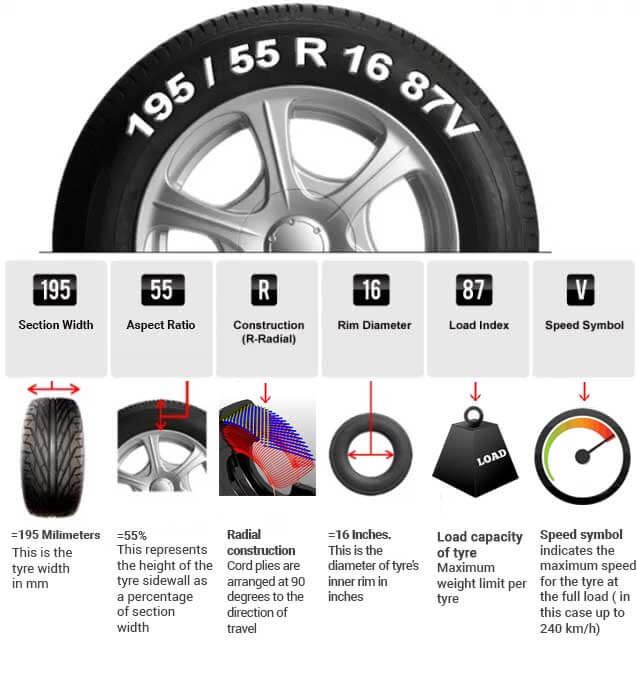 5 5 | 4.5 | 5.5 |
| 165/65R14 | 4.5 | 5 | 6 | |
| 175/65R14 | 5 | 5 | 6 | |
| 185/65R14 | 5 | 5.5 | 6.5 | |
| 195/65R14 | 5.5 | 6 | 7 | |
| 15" | 145/65R15 | 4 | 4.5 | 5 |
| 155/65R15 | 4.5 | 4.5 | nine0130 5||
| 165/65R15 | 4.5 | 5 | 6 | |
| 175/65R15 | 5 | 5 | 6 | |
| 185/65R15 | 5 | 5. 5 5 | 6.5 | |
| 195/65R15 | 5.5 | nine0130 67 | ||
| 205/65R15 | 5.5 | 6 | 7.5 | |
| 215/65R15 | 6 | 6.5 | 7.5 | |
| 16" | 215/65R16 | 6 | 6.5 | 7.5 |
| 17" | 235/65R17 | 6.5 | 7 | 8.5 |
| 18" | 235/65R18 | 6.5 | 7 | 8.5 |
| 14" | 165/60R14 | 4. 5 5 | 5 | 6 | nine0142
| 175/60R14 | 5 | 5 | 6 | |
| 185/60R14 | 5 | 5.5 | 6.5 | |
| 195/60R14 | 5.5 | 6 | 7 | |
| 15" | 175/60R15 | 5 | 5 | 6 |
| 185/60R15 | 5 | 5.5 | 6.5 | |
| 195/60R15 | 5.5 | 6 | 7 | |
| 205/60R15 | 5.5 | 6 | 7.5 | |
| 225/60R15 | 6 | 6. 5 5 | 8 | |
| 16" | 205/60R16 | 5.5 | 6 | 7.5 |
| 215/60R16 | 6 | 6.5 | 7.5 | |
| 225/60R16 | 6 | 6.5 | nine0130 8||
| 235/60R16 | 6.5 | 7 | 8.5 | |
| 17" | 225/60R17 | 6 | 6.5 | 8 |
| 14" | 185/55R14 | 5 | 6 | 6.5 | nine0142
| 15" | 175/55R15 | 5 | 5. 5 5 | 6 |
| 185/55R15 | 5 | 6 | 6.5 | |
| 195/55R15 | 5.5 | 6 | 7 | |
| 205/55R15 | 5.5 | 6.5 | 7.5 | |
| 225/55R15 | 6 | 7 | 8 | |
| 16" | 195/55R16 | 5.5 | 6 | 7 |
| 205/55R16 | 5.5 | 6.5 | 7.5 | nine0142|
| 215/55R16 | 6 | 7 | 7.5 | |
| 225/55R16 | 6 | 7 | 8 | |
| 245/55R16 | 7 | 7.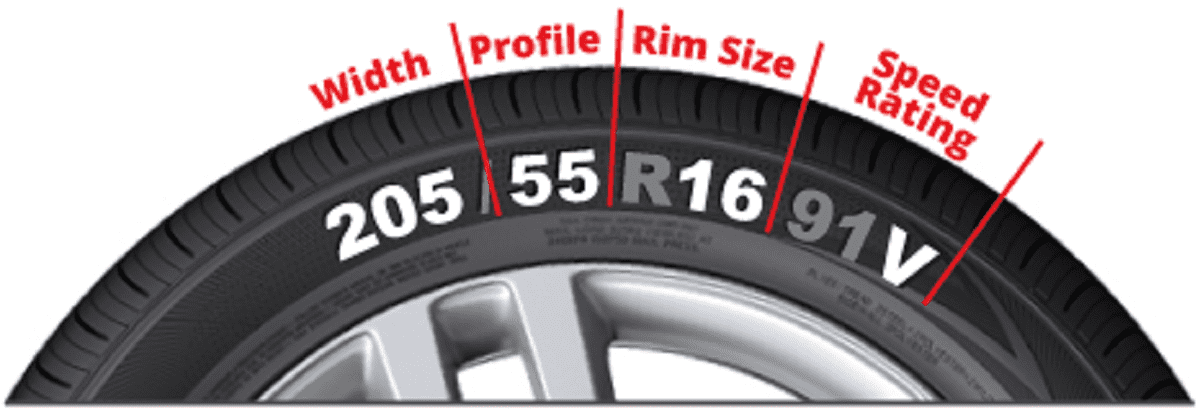 5 5 | 8.5 | |
| 17" | 205/55R17 | 5.5 | 6.5 | 7.5 |
| 215/55R17 | 6 | 7 | 7.5 | |
| 225/55R17 | 6 | 7 | 8 | |
| 235/55R17 | 6.5 | 7.5 | 8.5 | |
| 245/55R17 | 7 | 7.5 | 8.5 | |
| 255/55R17 | 7 | 8 | 9 | |
| 15" | 195/50R15 | 5.5 | 6 | 7 |
| 205/50R15 | 5. 5 5 | 6.5 | nine0130 7.5||
| 225/50R15 | 6 | 7 | 8 | |
| 16" | 185/50R16 | 5 | 6 | 6.5 |
| 195/50R16 | 5.5 | 6 | 7 | |
| 205/50R16 | 5.5 | 6.5 | 7.5 | |
| 215/50R16 | 6 | 7 | 7.5 | |
| 225/50R16 | 6 | 7 | 8 | |
| 235/50R16 | 6.5 | 7.5 | 8.5 | |
| 245/50R16 | 7 | 7. 5 5 | 8.5 | |
| 255/50R16 | 7 | 8 | 9 | |
| 17" | 205/50R17 | 5.5 | 6.5 | 7.5 |
| 215/50R17 | 6 | 7 | 7.5 | |
| 225/50R17 | 6 | 7 | 8 | |
| 235/50R17 | 6.5 | 7.5 | 8.5 | |
| 18" | 235/50R18 | 6.5 | 7.5 | 8.5 | nine0142
| 245/50R18 | 7 | 7.5 | 8. 5 5 | |
| 19" | 275/50R19 | 7.5 | 8.5 | 9.5 |
| 15" | 195/45R15 | 6 | 6.5 | 7.5 |
| 16" | 195/45R16 | 6 | 6.5 | 7.5 |
| 205/45R16 | 6.5 | 7 | 7.5 | |
| 215/45R16 | 7 | 7 | 8 | |
| 225/45R16 | 7 | nine0130 7.58.5 | ||
| 245/45R16 | 7.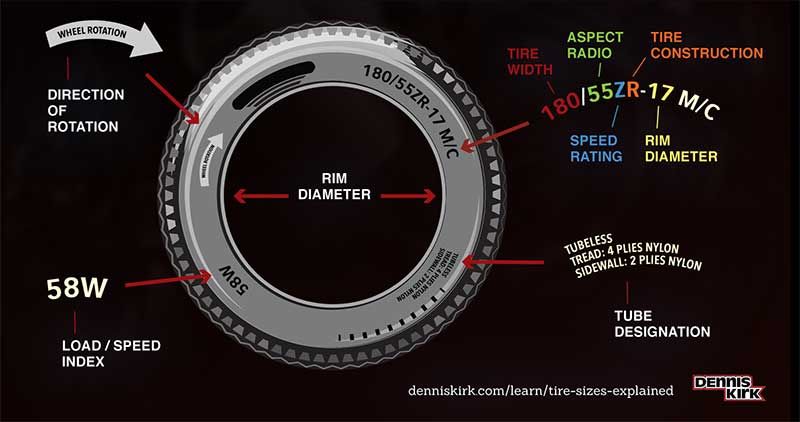 5 5 | 8 | 9 | |
| 17" | 205/45R17 | 6.5 | 7 | 7.5 |
| 215/45R17 | 7 | 7 | 8 | |
| 225/45R17 | 7 | 7.5 | 8.5 | |
| 235/45R17 | 7.5 | 8 | 9 | |
| 245/45R17 | 7.5 | 8 | 9 | |
| 255/45R17 | 8 | 8.5 | 9.5 | |
| 18" | 215/45R18 | 7 | 7 | 8 |
| 225/45R18 | 7 | 7. 5 5 | 8.5 | |
| 235/45R18 | 7.5 | 8 | 9 | |
| 245/45R18 | 7.5 | 8 | 9 | |
| 255/45R18 | 8 | 8.5 | 9.5 | |
| 275/45R18 | 8.5 | 9 | 10.5 | |
| 19" | 245/45R19 | 7.5 | 8 | nine0130 9|
| 20" | 275/45R20 | 8.5 | 9 | 10.5 |
| 16" | 215/40R16 | 7 | 7.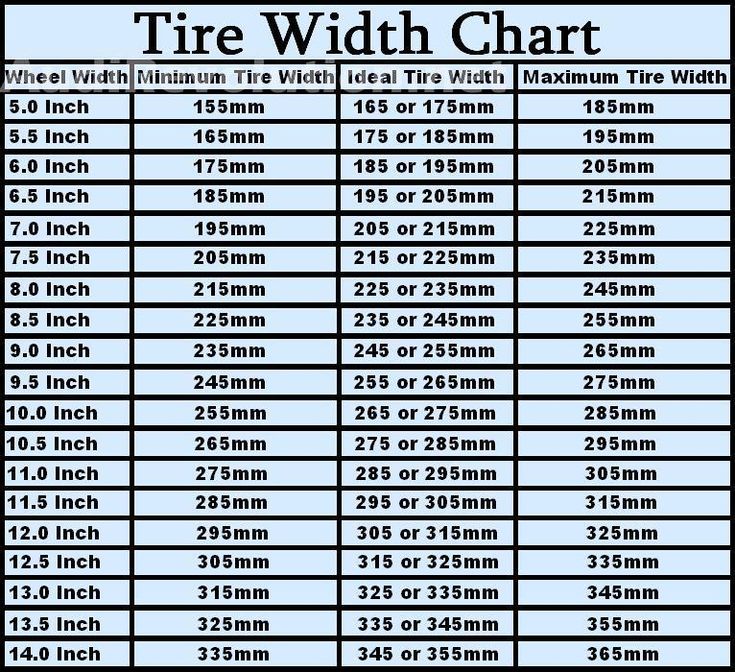 5 5 | 8.5 |
| 17" | 205/40R17 | 7 | 7.5 | 8 |
| 215/40R17 | 7 | 7.5 | 8.5 | |
| 235/40R17 | 8 | 8.5 | 9.5 | |
| 245/40R17 | 8 | 8.5 | 9.5 | |
| 255/40R17 | nine0130 8.59 | 10 | ||
| 265/40R17 | 9 | 9.5 | 10.5 | |
| 275/40R17 | 9 | 9.5 | 11 | |
| 285/40R17 | 9 | 10 | 11 | |
| 18" | 205/40R18 | 7 | 7. 5 5 | 8 |
| 225/40R18 | 7.5 | 8 | 9 | |
| 235/40R18 | 8 | 8.5 | 9.5 | |
| 245/40R18 | 8 | 8.5 | 9.5 | |
| 255/40R18 | 8.5 | 9 | 10 | |
| 265/40R18 | 9 | 9.5 | 10.5 | |
| 275/40R18 | 9 | 9.5 | 11 | |
| 285/40R18 | nine0130 9.510 | 11 | ||
| 19" | 225/40R19 | 7. 5 5 | 8 | 9 |
| 245/40R19 | 8 | 8.5 | 9.5 | |
| 255/40R19 | 8.5 | 9 | 10 | |
| 275/40R19 | 9 | 9.5 | 11 | |
| 20" | 245/40R20 | 8 | 8.5 | 9.5 |
| 17" | 225/35R17 | 7.5 | 8 | 9 |
| 265/35R17 | 9 | 9.5 | 10.5 | |
| 335/35R17 | 11 | 12 | 13 | |
| 18" | 215/35R18 | 7 | 7.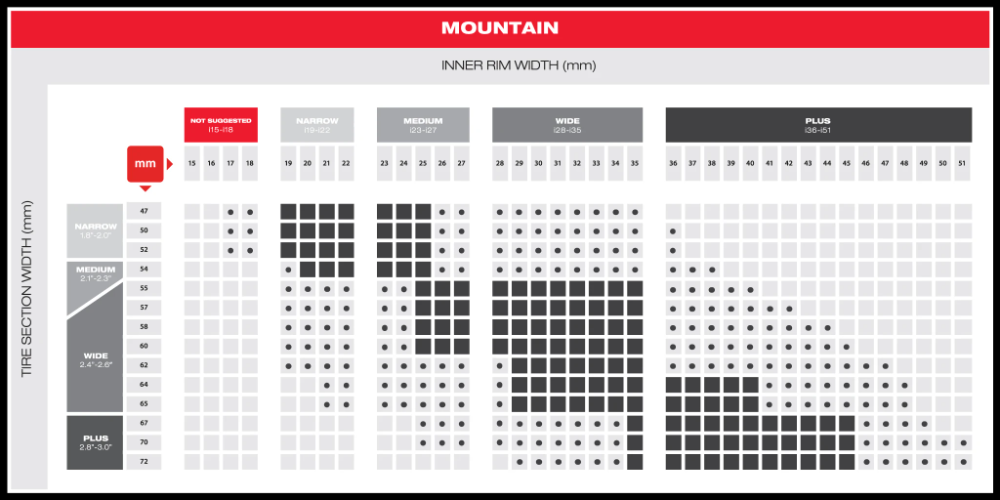 5 5 | 8.5 |
| 225/35R18 | 7.5 | 8 | 9 | |
| 235/35R18 | 8 | 8.5 | 9.5 | |
| 255/35R18 | 8.5 | 9 | 10 | |
| 265/35R18 | 9 | 9.5 | 10.5 | |
| 275/35R18 | 9 | 9.5 | 11 | |
| 285/35R18 | 9.5 | 10 | 11 | |
| 295/35R18 | 10 | 10.5 | 11.5 | |
| 345/35R18 | 11. 5 5 | 12 | 13.5 | nine0142|
| 19" | 225/35R19 | 7.5 | 8 | 9 |
| 235/35R19 | 8 | 8.5 | 9.5 | |
| 245/35R19 | 8 | 8.5 | 9.5 | |
| 255/35R19 | nine0130 8.59 | 10 | ||
| 265/35R19 | 9 | 9.5 | 10.5 | |
| 275/35R19 | 9 | 9.5 | 11 | |
| 285/35R19 | 9.5 | 10 | 11 | |
| 295/35R19 | 10 | 10.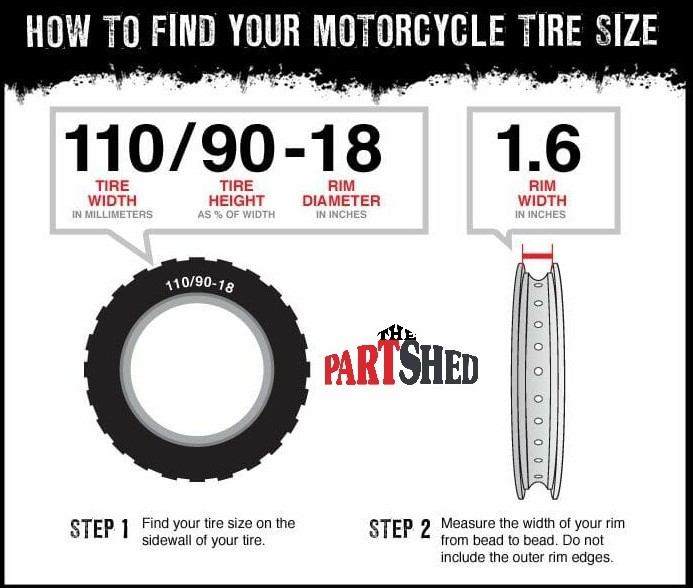 5 5 | 11.5 | |
| 20" | 245/35R20 | 8 | 8.5 | 9.5 |
| 255/35R20 | 8.5 | 9 | 10 | |
| 275/35R20 | 9 | nine0130 9.511 | ||
| 21" | 245/35R21 | 8 | 8.5 | 9.5 |
| 255/35R21 | 8.5 | 9 | 10 | |
| 18" | 285/30R18 | 9.5 | 10 | nine0130 10.5|
| 295/30R18 | 10 | 10.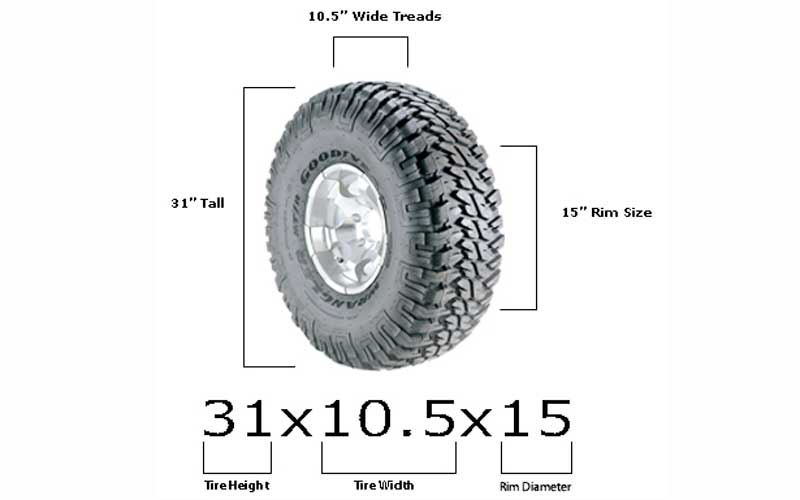 5 5 | 11 | |
| 315/30R18 | 10.5 | 11 | 11.5 | |
| 335/30R18 | 11.5 | 12 | 12.5 | |
| 345/30R18 | 11.5 | 12 | 12.5 | |
| 19" | 265/30R19 | 9 | 9.5 | 10 |
| 275/30R19 | 9 | 9.5 | 10 | |
| 285/30R19 | 9.5 | 10 | 10.5 | nine0142|
| 295/30R19 | 10 | 10.5 | 11 | |
| 305/30R19 | 10. 5 5 | 11 | 11.5 | |
| 345/30R19 | 11.5 | 12 | 12.5 | |
| 20" | 235/30R20 | nine0130 8.58.5 | 9.5 | |
| 245/30R20 | 8.5 | 8.5 | 9.5 | |
| 255/30R20 | 9 | 9 | 10 | |
| 285/30R20 | 10 | 10 | 11 | |
| 335/30R20 | 12 | 12 | 13 | |
| 21" | 255/30R21 | 9 | 9 | 10 |
| 285/30R21 | 10 | 10 | 11 | |
| 295/30R21 | 10 | nine0130 10.11 | ||
| 22" | 255/30R22 | 9 | 9 | 10 |
| 19" | 315/25R19 | 11 | 11.5 | 12 |
| 20" | 285/25R20 | 10.5 | ||
| 295/25R20 | 10 | 10.5 | 11 | |
| 325/25R20 | 11.5 | 12 | 12.5 | |
| 21" | 295/25R21 | 10 | 10.5 | 11 |
| 22" | 295/25R22 | 10 | 10. 5 5 | 11 |
| What does a snowflake on a tire mean? The snowflake on a tire (3PMSF mark) is a special marking for models that have been tested on snow and are able to meet the minimum safety requirements for driving on snow.. 06 January 2023, 11:08 | |
| Worn tires are more dangerous than drunk driving A new study has found that worn tires are more dangerous than drunk driving. It has been found that driving a car with tires that have a tread depth of 1.6 mm can increase the... 26 December 2022, 11:02 | |
Tire labels - how to read? nine2680 From November 1, 2012, tires sold in countries within the European Union must have special stickers. They contain information, in particular, on the fuel.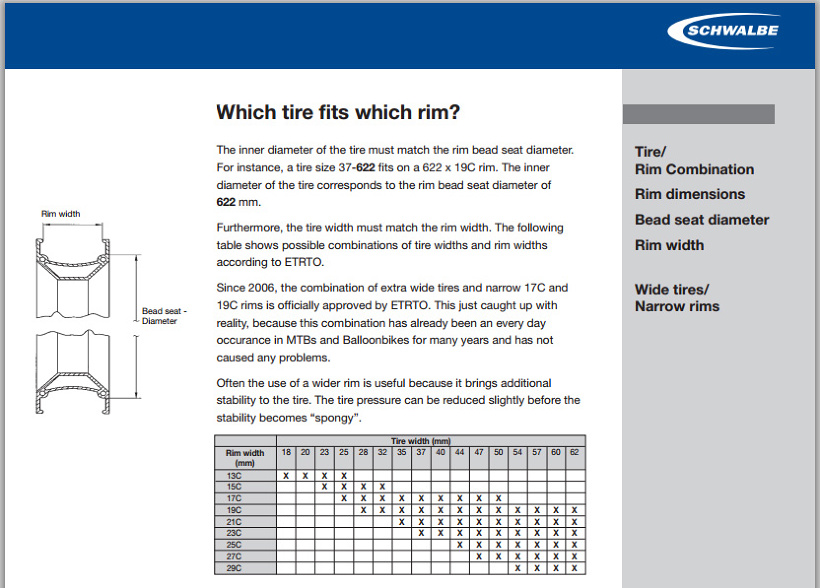 | |